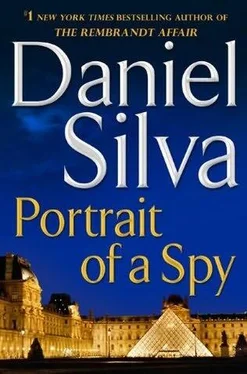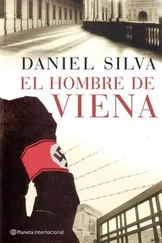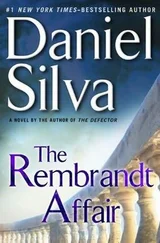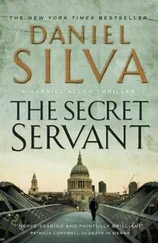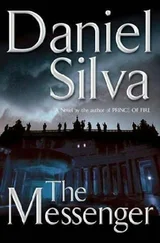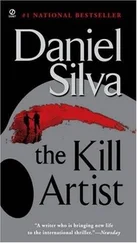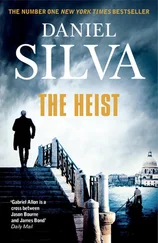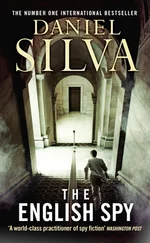The keepers of the old order tried to tarnish Nadia’s reputation by branding her an Israeli spy and provocateur. Because of Gabriel’s confession, which played ceaselessly on the Internet and the pan-Arab news networks, the charges against Nadia were widely dismissed. Her cultish following grew even larger when Zoe Reed of CNBC devoted an entire edition of her prime-time program to Nadia’s posthumous impact on the Arab Awakening. During the broadcast, Zoe revealed that she had conducted several private meetings with Nadia during which the Saudi heiress acknowledged secretly funneling tens of millions of dollars to reform-minded organizations across the Arab and Islamic world. The program also accused the intelligence services of Saudi Arabia of complicity in her death—an accusation that brought a swift denunciation from the House of Saud, along with the usual threats about withholding oil from the West. This time, no one paid much attention. Like every other regime in the region, the al-Saud were now hanging on for dear life.
By then, it was June and the Americans were clamoring for a post-operational debriefing. Chiara imposed strict limitations on the amount of time the inquisitors would be allowed to spend with their subject—two hours in the morning, two hours in the late afternoon, three days in all. Posing as tourists, they stayed at a dreadful little bed-and-breakfast in Helston that Gabriel had chosen personally. The sessions were held at the dining room table. Shamron remained at Gabriel’s side throughout, like a defense attorney at a deposition. There was no recording.
Chiara feared the debriefings would reopen wounds that were just then beginning to heal. Instead, they proved to be precisely the sort of therapy Gabriel so desperately required. The strictures of professionalism imposed a cold and emotionless tone on the proceedings. The debriefers posed their questions with the dryness of policemen investigating a minor traffic mishap, and Gabriel responded in kind. Only when the debriefers asked him to describe the moment of Nadia’s death did his voice catch with emotion. When Shamron asked for a change of subject, the debriefers produced a photo of a young Saudi who had recently graduated from the terrorist rehabilitation program and placed it carefully on the table.
“Do you recognize him?”
“Yes,” said Gabriel. “He’s the one who killed Malik and the others.”
“His name is Ali al-Masri,” said one of the Americans.
“Where is he?”
“Living quietly in Jeddah. He’s fallen out of the orbit of Sheikh Bin Tayyib and seems to have left the jihadist movement for good. His wife just gave birth to a little girl.”
“Hanan,” said Gabriel. “The child’s name is Hanan.”
The session was their last. That evening, Chiara lifted her ban on television during dinner so they could watch the Arab world unraveling. The regimes in Syria and Jordan were teetering, and there were reports the Saudis had ordered the National Guard to fire on protesters in Riyadh and Jeddah, killing dozens. Prince Nabil, the powerful Saudi interior minister, blamed the unrest on the Shiite regime in Iran and on followers of Nadia al-Bakari. His comments had the unintended effect of raising her profile among the demonstrators to new heights.
The following morning, Nadia became a posthumous hero to the art world as well when the Museum of Modern Art in New York announced that it had been entrusted with her entire collection. In return for the works, estimated to be worth at least five billion dollars, MoMA had agreed to allow Nadia’s estate to appoint the first curator. As she strode to the podium to meet the New York press for the first time, the denizens of the art world breathed an enormous sigh of relief. They did not know much about Sarah Bancroft, but at least she was one of them.
She called Chiara the next day. She had heard from Adrian Carter that Gabriel’s recovery wasn’t going well and had an idea she thought might help. It was a job offer. A commission. Chiara accepted it without bothering to consult with Gabriel. She asked only for the dimensions and a deadline. The dimensions were large. The deadline was tight. Two months was all he would have. Chiara wasn’t worried; her husband had relined and restored a Titian in a matter of days. Two months was an eternity. He began work the following morning by adhering a bolt of white canvas to a stretcher he made himself. Then he placed Chiara at one end of the couch and manipulated her limbs like those of a wooden sketch model until they conformed to the image in his memory. He spent a week working out the composition on paper. Satisfied, he began to paint.
The days of midsummer were very long. The portrait gave them purpose. Gabriel worked for several hours in the morning, took a break at midday for a meal and a walk in the cove, then worked again in the evening until the sun dropped into the sea. Much to his dismay, Shamron watched over him constantly. Chiara watched, too, but from a distance. Just as she had hoped, the work proved to be Gabriel’s salvation. There were some people who dealt with grief by talking to therapists, she thought, and others who felt compelled to write about it. But for Gabriel, the healing balm of oil on canvas had always been best, just as it had been for his mother before him. Standing before the easel, he had total control. Missteps could be corrected with a few strokes of the brush, or hidden beneath a layer of obliterating paint. No one bled. No one died. No one sought vengeance. There was only beauty and truth as he saw it.
He worked without an underdrawing and with a palette influenced by the colors he had seen in the Empty Quarter. Blending the meticulous draftsmanship of the Old Masters with the freedom of the Impressionists, he created a mood that was both classical and contemporary. He hung pearls around her neck and adorned her hands with diamonds and gold. A clock face shone moonlike over her shoulder. Orchids lay at her bare feet. For several days, he struggled with the background. In the end, he chose to depict her rising out of Caravaggesque darkness. Or was she actually sinking into the darkness? That would be determined by the uprising raging on the streets of the Arab world.
Despite the intensity of the work, Gabriel’s appearance improved dramatically. He gained weight. He slept more. The pain of his injuries receded. With time, he felt strong enough to return to the cliff tops. Each day, he roamed a little farther, leaving Shamron no choice but to watch from a distance. His mood darkened as Gabriel slipped slowly from his grasp. He knew it was time to leave; he just didn’t know how to go about it. Chiara quietly tried to arrange a crisis of some sort that would require him to return to King Saul Boulevard. Failing, she had no choice but to enlist the help of Gilah, who sounded as if she were thoroughly enjoying Shamron’s prolonged absence. Reluctantly, she decreed that her husband could remain in Cornwall only until the painting was finished. Then he would have to come home.
And so it was with a sense of foreboding that Shamron watched Nadia al-Bakari come slowly to life on the canvas. As the painting neared completion, Gabriel worked harder than ever. Yet at the same time, he appeared reluctant to finish. Beset by a rare case of indecision, he made countless minor additions and subtractions. Shamron privately relished Gabriel’s apparent inability to let go of the painting. Every day Gabriel delayed completion was another day Shamron would have with him.
Eventually, the revisions stopped and Gabriel began the process of making peace with his work. Not just Nadia—all of it. Shamron saw the shadow of death lift gradually from Gabriel’s face. And on a clear morning in late August, he entered Gabriel’s makeshift studio to find him looking remarkably like the gifted young man he had plucked from the Bezalel Academy of Arts and Design in Jerusalem in the terrible autumn of 1972. Only Gabriel’s hair was different. Then it had been almost as black as Nadia’s. Now it was stained with gray at the temples—smudges of ash on the prince of fire.
Читать дальше
Конец ознакомительного отрывка
Купить книгу
